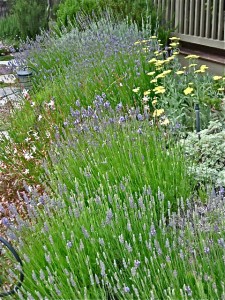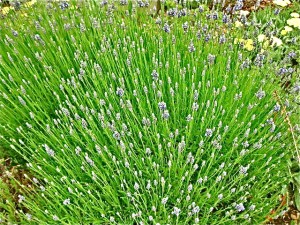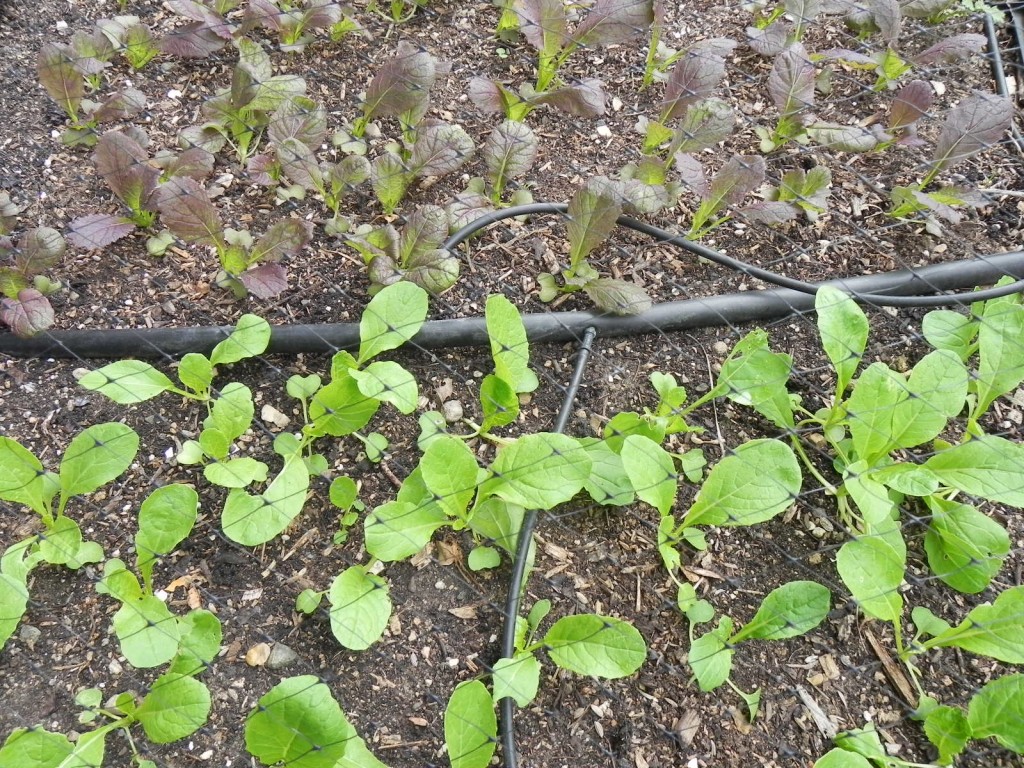
Just as the Spanish lavenders are ready for cutting back, the English lavenders are offering up their spiky color. There is a lot of confusion about English lavender (L. augustifolia). For one, they are not natives of England but the Mediterranean. They are coveted for their dried fragrant flowers used in potpourri and for culinary purposes. Most of the English lavenders you see in gardens are actually hybrids between the English lavender and Lavandula latifolia and are called “lavandins” (L. x intermedia).

Both the English lavender and lavandins are in the evergreen mint family, have grey-green foliage, make neat shrubs, and are fragrant. They differ in height, flower colors, the size of flower heads, and the time of bloom. The darkest flower colors are among the English lavender and the longest flower stems and largest flowers among the lavandins. Lavadin flowers have a stronger taste but are good in cooking (just use a little less than called for).
English lavenders and lavandins are susceptible to root rot in our heavy lay soil. If you think your soil is too heavy for lavender, try planting them in mounds amended with crushed granite. They say that chicken manure has a fungal deterrent so makes a good fertilizer for lavender. We’ll see about that! After blooms have faded, harvesting the flowers may be all the prunning necessary. If not, cut back stems to about half their original height, reduce water, and let your beauties rest!

